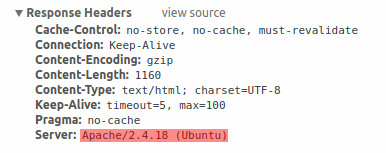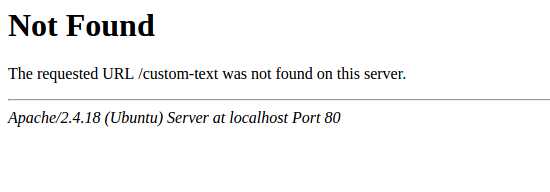- Наилучшие практики для безопасной установки Zabbix
- Обзор
- Защищённый пользователь для Zabbix агента
- Настройка SSL для Zabbix веб-интерфейса
- Включение Zabbix в корневом каталоге URL
- Revoke write access to SSL configuration (Windows)
- Отключение отображения информации о веб-сервере
- Отключение страниц ошибок по умолчанию веб-сервера
- Удаление тестовой страницы с веб-сервера
- Disabling web server information exposure
- Disabling default web server error pages
- Removing web server test page
- Zabbix settings
- Zabbix Windows agent with OpenSSL
- Security vulnerabilities
Наилучшие практики для безопасной установки Zabbix
Обзор
В этом разделе содержатся рекомендации, которые следует соблюдать для того, чтобы настроить Zabbix безопасным образом.
Практики, описанные здесь, не требуются для работы Zabbix. Они рекомендуются для повышения безопасности системы.
Защищённый пользователь для Zabbix агента
В конфигурации по умолчанию процессы Zabbix сервера и Zabbix агента делят одного 'zabbix' пользователя. Если вы хотите убедиться, что агент не сможет получить доступ к конфиденциальной информации из конфигурации сервера (например, данные подключения в базе данных), агента необходимо запускать из под другого пользователя:
- Создайте защищённого пользователя
- Укажите этого пользователя в файле конфигурации агента (параметр 'User')
- Перезапустите агента с правами администратора. Привилегии администратора сбросятся на указанного пользователя.
Настройка SSL для Zabbix веб-интерфейса
На RHEL/Centos, установите пакет mod_ssl:
Создайте папку для SSL ключей:
Создайте SSL сертификат:
openssl req -x509 -nodes -days 365 -newkey rsa:2048 -keyout /etc/httpd/ssl/private/apache-selfsigned.key -out /etc/httpd/ssl/apache-selfsigned.crtЗаполните подсказки соответствующим образом. Самая важная строка здесь, которая запрашивает Common Name. Вам необходимо указать имя домена, которое вы хотите связать с вашим сервером. Вместо него вы можете указать публичный IP адрес, если у вас отсутствует имя домена. В этой статье мы будем использовать example.com.
Country Name (2 letter code) [XX]:
State or Province Name (full name) []:
Locality Name (eg, city) [Default City]:
Organization Name (eg, company) [Default Company Ltd]:
Organizational Unit Name (eg, section) []:
Common Name (eg, your name or your server's hostname) []:example.com
Email Address []:Измените конфигурацию Apache SSL:
/etc/httpd/conf.d/ssl.conf
DocumentRoot "/usr/share/zabbix"
ServerName example.com:443
SSLCertificateFile /etc/httpd/ssl/apache-selfsigned.crt
SSLCertificateKeyFile /etc/httpd/ssl/private/apache-selfsigned.keyПерезапустите сервис Apache, чтобы применить изменения:
Включение Zabbix в корневом каталоге URL
Добавьте виртуальный хост в конфигурацию Apache и задайте постоянную переадресацию для корневого каналога на Zabbix SSL URL. Не забудьте заменить example.com на актуальное имя сервера.
/etc/httpd/conf/httpd.conf
#Добавьте строки
<VirtualHost *:*>
ServerName example.com
Redirect permanent / http://example.com
</VirtualHost>Перезапустите сервис Apache, чтобы применить изменения:
Revoke write access to SSL configuration (Windows)
If you have compiled Zabbix agent on Windows, with OpenSSL located in an unprotected directory (e.g., c:\openssl-64bit, C:\OpenSSL-Win64-111-static, or C:\dev\openssl), make sure to revoke write access from non-administrator users to this directory. Otherwise, the agent loads SSL settings from a path that can be modified by unprivileged users, resulting in a potential security vulnerability.
Отключение отображения информации о веб-сервере
Рекомендуется отключить все подписи веб-сервера, как часть процесса по улучшению защищенности веб-сервера. По умолчанию веб-сервер раскрывает подпись программного обеспечения:

Эту подпись можно отключить, добавив две строки в файл конфигурации Apache (используется как пример):
Подпись PHP (Заголовок X-Powered-By HTTP) можно отключить, изменив файл конфигурации php.ini (подпись отключена по умолчанию):
Чтобы изменения файлов конфигурации вступили в силу, необходимо перезапустить веб-сервер.
Дополнительный уровень безопасности можно достичь, используя mod_security (пакет libapache2-mod-security2) с Apache. mod_security позволяет совсем удалить подпись сервера вместо удаления лишь версии из подписи сервера. Подпись можно изменить на любое значение, исправив "SecServerSignature" на любое желаемое значение, после установки mod_security.
Пожалуйста, обратитесь к документации по вашему веб-серверу для того, чтобы узнать как удалять/изменять подписи к программному обеспечанию.
Отключение страниц ошибок по умолчанию веб-сервера
Рекомендуется отключить страницы ошибок по умолчанию, чтобы избежать раскрытия информации. По умолчанию веб-сервер использует встроенные страницы ошибок:

Страницы ошибок по умолчанию необходимо заменить/удалить, как часть процесса по улучшению защищенности веб-сервера. Можно использовать директиву "ErrorDocument", чтобы задать пользовательскую страницу/текст веб-серверу Apache (используется как пример).
Пожалуйста, обратитесь к документации по вашему веб-серверу для того, чтобы узнать как заменять/удалять страницы ошибок по умолчанию.
Удаление тестовой страницы с веб-сервера
Рекомендуется удалить тестовую страницу веб-сервера, чтобы избежать раскрытия информации. По умолчанию, корневой каталог веб-сервера содержит тестовую страницу с именем index.html (Apache2 на Ubuntu используется как пример):

Тестовую страницу необходимо удалить или сделать недоступной, как часть процесса по улучшению защищенности веб-сервера.
Disabling web server information exposure
It is recommended to disable all web server signatures as part of the web server hardening process. The web server is exposing software signature by default:

The signature can be disabled by adding two lines to the Apache (used as an example) configuration file:
PHP signature (X-Powered-By HTTP header) can be disabled by changing the php.ini configuration file (signature is disabled by default):
Web server restart is required for configuration file changes to be applied.
Additional security level can be achieved by using the mod_security (package libapache2-mod-security2) with Apache. mod_security allows to remove server signature instead of only removing version from server signature. Signature can be altered to any value by changing "SecServerSignature" to any desired value after installing mod_security.
Please refer to documentation of your web server to find help on how to remove/change software signatures.
Disabling default web server error pages
It is recommended to disable default error pages to avoid information exposure. Web server is using built-in error pages by default:

Default error pages should be replaced/removed as part of the web server hardening process. The "ErrorDocument" directive can be used to define a custom error page/text for Apache web server (used as an example).
Please refer to documentation of your web server to find help on how to replace/remove default error pages.
Removing web server test page
It is recommended to remove the web server test page to avoid information exposure. By default, web server webroot contains a test page called index.html (Apache2 on Ubuntu is used as an example):

The test page should be removed or should be made unavailable as part of the web server hardening process.
Zabbix settings
By default, Zabbix is configured with X-Frame-Options HTTP response header set to SAMEORIGIN, meaning that content can only be loaded in a frame that has the same origin as the page itself.
Zabbix frontend elements that pull content from external URLs (namely, the URL dashboard widget) display retrieved content in a sandbox with all sandboxing restrictions enabled.
These settings enhance the security of the Zabbix frontend and provide protection against XSS and clickjacking attacks. Super Admins can modify iframe sandboxing and X-Frame-Options HTTP response header parameters as needed. Please carefully weigh the risks and benefits before changing default settings. Turning sandboxing or X-Frame-Options off completely is not recommended.
Zabbix Windows agent with OpenSSL
Zabbix Windows agent compiled with OpenSSL will try to reach the SSL configuration file in c:\openssl-64bit. The "openssl-64bit" directory on disk C: can be created by non-privileged users.
So for security hardening, it is required to create this directory manually and revoke write access from non-admin users.
Please note that the directory names will be different on 32-bit and 64-bit versions of Windows.
Security vulnerabilities
CVE-2021-42550
In Zabbix Java gateway with logback version 1.2.7 and prior versions, an attacker with the required privileges to edit configuration files could craft a malicious configuration allowing to execute arbitrary code loaded from LDAP servers.
Vulnerability to CVE-2021-42550 has been fixed since Zabbix 5.4.9. However, as an additional security measure it is recommended to check permissions to the /etc/zabbix/zabbix_java_gateway_logback.xml file and set it read-only, if write permissions are available for the "zabbix" user.

